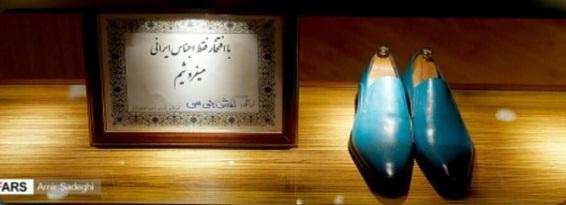Baku, Azerbaijan, Mar. 9
By Farhad Daneshvar – Trend:
Ahead of Nowruz holidays marking the beginning of the new Iranian calendar year, hopes have flared up inside the country that an appeal to nationalism would help made-in-Iran products recover lost ground.
Responding to the official calls, a group of Iranians alongside with media outlets have joined a campaign to back domestic production as the officials are looking inward to change the consumption habits of the nation, accustomed to purchasing a wide range of foreign products, aimed at helping the country’s depressed economy to climb out of the deep recession.
The campaign calls on all the people across the country to play their part in giving support for the domestic production by purchasing made-in-Iran products.
“Let’s support domestic and Iranian production by purchasing Iranian products over the holiday,” the official IRNA news agency urged in a report on March 8 as part of the campaign.
In the meantime, the efforts to wean Iran from imports have found its way to social media as some users are echoing their support for the domestic goods by sharing the photographs and addresses of shops that offer solely Iranian goods.

The banner in the above photograph reads “we proudly sell only Iranian made products”.
But not everyone finds the campaign helpful as efforts to increase domestic production faces serious head winds with many observers arguing that building confidence in the domestic products must be considered as the first step before producing more goods domestically.
Lack of consumer interest and crippling sanctions over the past several years contributed to the closure of numerous factories, increasing Iran's already high unemployment rate.
The country’s unemployment rate last summer (June 21-Sept. 21) stood at 12.7 percent; about 23 million people were employed with 3.3 million unemployed. The number of unemployed people over the past four years has annually increased by 500,000. Some 1.2 million job seekers, mostly university graduates, join the country’s job market per year.
According to the International Monetary Fund (IMF), Iran’s nominal GDP would increase from the current $377 billion to $472 billion in five years.
This is while made-in-Iran goods have suffered as the domestic producers are still struggling with foreign competition over the market share.
The official statistics suggest that Iran's non-oil export over the past years has strengthened steadily, but its total import has also risen.
According to the Iranian Customs Administration, the country imported 30.005 million tons of goods, worth $38.415 billion over the current fiscal year (started March 20, 2016). The figure indicates a 3.47 percent surge in terms of value year-on-year. Meanwhile, the official estimations suggest that about $12-13 billion worth of goods were smuggled into the country.
Simultaneously, the country’s non-oil exports posted $38.492 billion over the year starting March 20, a rise by 0.21 percent.
A Tehran-based boutique owner has told Trend that many customers still appear reluctant to abandon imported goods in favor of home-made ones as they need to restore trust in domestic products, even if they are cheaper.
It seems that stoking nationalist sentiment alone is unlikely to help the economy in the long-term. Instead, the officials and producers need to draw up firm plans aimed at improving the quality of products and services to regain consumers’ confidence.





